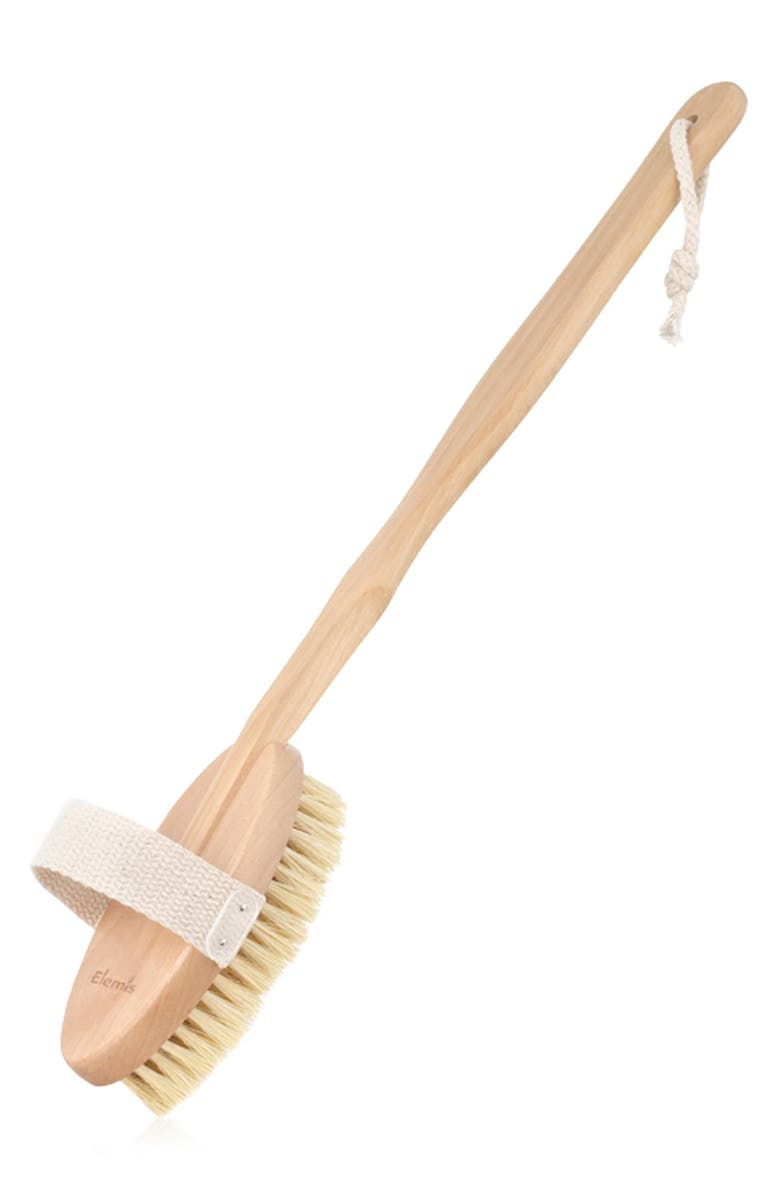Everyone Is Dry Brushing for Smoother Skin—And You Should, Too
Beauty experts reveal the benefits of Ayurvedic practice, and how to brush like a pro.
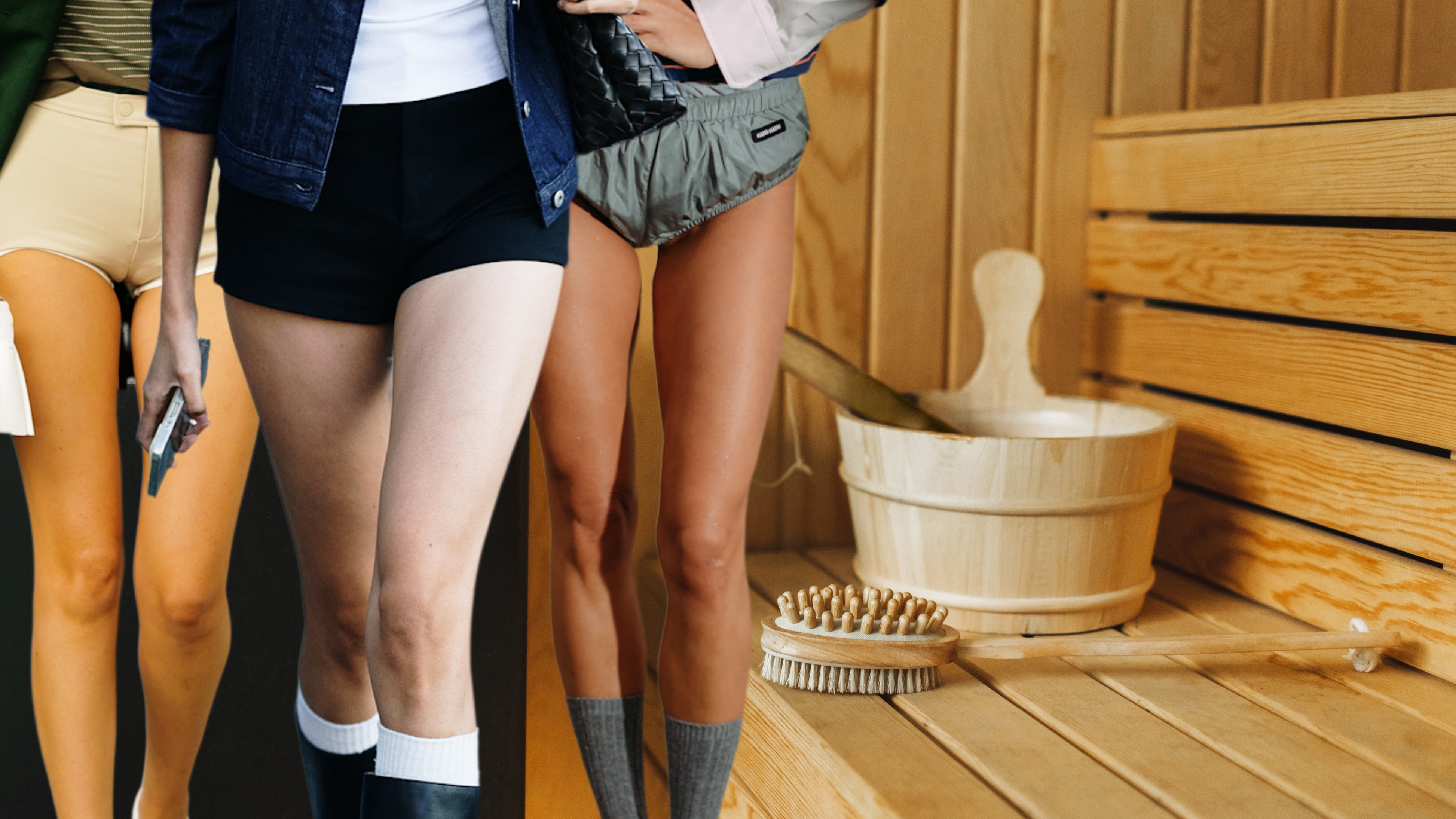
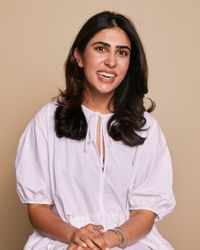
As someone with very dry skin (winter only makes matters worse), exfoliating is a non-negotiable. I love a good body scrub and glycolic acid-based serum as much as the next beauty editor, but my real insider secret is dry brushing at least once a week. You might associate dry brushing with Almond Moms or wellness content creators on TikTok who promote the "benefits" of frequency generators and days-long silent retreats. But in reality, dry brushing is far less woo-woo than it seems.
Dry brushing is an Ayurvedic practice believed to awaken the skin and move what’s often called “stagnant energy,” which, in practical terms, refers to sluggish circulation and lymphatic flow. Dermatologists, on the other hand, view it as a straightforward exfoliating technique that removes dead skin cells, and note that the gentle pressure may also support healthy circulation and lymphatic movement. “When done regularly, dry brushing can temporarily make skin look firmer and more toned due to increased blood flow to the treatment area,” says board-certified dermatologist Brendan Camp, MD.
Before you overdo it or grab a brush with stiff, scratchy bristles, there are a few things to know. Below, experts explain the real benefits, how to dry brush correctly, and the best tools to get you started.
What Are the Benefits of Dry Brushing?
According to Dr. Camp, the dry brushing technique removes dead skin cells and increases microcirculation at the skin’s surface. He adds that “dry brushing can potentially prime your skin for moisturizers too,” meaning your creams, balms, and body butters may absorb more effectively afterward. (I'll do just about anything in the name of softer skin.)
Dry brushing is also used to support lymphatic flow, which is essentially the body’s waste-removal and immune drainage network. “Since the lymphatic system does not have a pump, it is helpful to manually stimulate it with touch or movement," says esthetician Cali Strauhs. She also incorporates other lymph-supportive practices, such as standing on a vibration plate, elevating her legs, and tapping the body's major lymphatic areas. When done correctly and regularly, that can lead to de-puffing and de-bloating effects.
Improved circulation can also enhance the skin’s overall tone and texture. “Dry brushing helps increase microcirculation, which can improve nutrients to the skin and remove wastes that accumulate in the tissue and may contribute to the appearance of cellulite,” says esthetician Cecily Braden. Dr. Camp agrees, adding that dry brushing can make skin appear firmer and more toned for a short period of time.
Does Dry Brushing Actually Work?
According to Dr. Camp, most claims about dry brushing lack scientific evidence and are largely anecdotal, with very few offering strong clinical evidence. Many of the most popular claims circulating on social media lack substantial research support.
Get exclusive access to fashion and beauty trends, hot-off-the-press celebrity news, and more.
One recent paper on the Japanese technique kanpūmasatsu, a dry-towel self-massage that is somewhat similar, found that light superficial stimulation “may enhance lymphatic flow beneath the skin," although the mechanism and measurable outcomes were not well documented.
Even with the lack of data, searches for dry brushing are up 25 percent since 2022, per Google Trends. There are thousands of positive reviews on best-selling dry brushes and countless TikToks and Instagram videos showing how much tighter, smoother, and more radiant skin can look after brushing. I’ve been dry brushing for years, and I always notice that my lotions absorb more quickly and my skin looks far less dull afterward, which is especially nice before a big occasion.
Can Dry Brushing Tighten Skin?
It's important to understand the limits of the practice. “Dry brushing is unlikely to tighten loose or lax skin,” says Dr. Camp. Loose skin is often caused by aging, sun exposure, or weight fluctuations. Daily sunscreen is more effective at preventing collagen breakdown, and ingredients like retinol or vitamin C can support collagen production more reliably. In-office treatments such as microneedling, CO2 laser resurfacing, and radiofrequency devices create significantly more tightening than dry brushing ever could.
How Do I Choose the Best Dry Brush?
Before you begin, Dr. Camp emphasizes the importance of choosing the right tool. Brushes that are too firm or made with low-quality bristles can cause more harm than good. In general, you want bristles that are soft to medium in firmness and feel flexible rather than uncomfortable or scratchy. Natural fibers, like boar bristles, offer a firmer exfoliation, while plant fibers, such as sisal or tampico, provide a nice mid-level option. If you have sensitive skin, a softer synthetic bristle is often the best choice to avoid irritation.
I’ve been dry brushing for years, and I always notice that my lotions absorb more quickly and my skin looks far less dull afterward.
Densely packed bristles tend to give the most even feel, whereas sparse or overly stiff bristles can tug at the skin or leave streaky marks. “Over-exfoliating can damage the skin barrier, making it vulnerable to environmental irritants and causing sensitivities. It can weaken the deeper layers, cause oxidative stress, and create inflammation, which is the precursor to aging," adds Braden. Gentle exfoliation, she counters, can refine texture, balance oil production, and support deeper nourishment. The goal is not to force aggressive cell turnover, but to maintain a healthy, resilient skin barrier. “Not all dry brushes are created equal,” Braden explains. “Quality and firmness vary, and it is important to find one that fits your needs. Do not purchase based on price, but on the softness and quality of the bristles.”
How Do I Dry Brush Correctly?
There is some proper technique involved in dry brushing, which is essential in order to achieve all of the benefits of the practice.
Step 1: Lightly Tap Your Clavicle Bones
- This is the hollow above the clavicle where lymph ultimately drains. Gently tap or massage this area for 10 to 15 seconds.
Step 2: Activate Other Key Lymph Nodes
Lightly tap or stroke these areas before brushing:
- Underarms (for chest, breasts, arms)
- Groin (for stomach, hips, legs)
- Behind the knees (for lower legs and feet)
Step 3: Brush Toward Lymph Nodes
Follow the pathway of lymphatic drainage:
- Arms: Start at the underarm, brush down toward the hands, then sweep back up.
- Legs: Start at the groin, brush down toward the feet, then sweep back up.
- Chest and breasts: Brush toward the underarms.
- Stomach: Brush downward toward the groin.
You can even follow with gua sha
A photo posted by on
Step 4: Watch Your Pressure
“Use light, sweeping strokes with moderate pressure. The skin should turn slightly pink, not red,” says Strauhs. You’ll know it’s working when you feel an urge to pee, as that’s lymph movement.
How Often Should I Dry Brush?
While TikTok might make daily brushing sound like an everyday ritual, experts say less is more. “Dry brush at most one to two times a week,” says Dr. Camp. “Make sure to clean your brush periodically to remove buildup and prevent contamination with microorganisms.” Braden agrees, noting that the "skin needs time to heal, regenerate, and respond in between sessions.”
A photo posted by on
When Is the Best Time to Dry Brush?
You're going to want to dry brush in the morning (or night), right before your shower. Dr. Camp explains that rinsing your body with a body wash will remove loose, dead skin cells. Once you're out, apply a body lotion to lock in hydration. “Because of the exfoliation benefits, it’s important to hydrate your skin afterward to nourish and keep the new cells pliable and protected,” says Braden
A photo posted by on
Who Shouldn't Dry Brush?
Dry brushing is not suitable for everyone. “Do not dry brush over sores or areas of skin that are open or raw,” says Dr. Camp. He recommends avoiding it in areas affected by eczema, psoriasis, or other inflammatory skin conditions. Those with very sensitive, dry, or fragile skin may want to brush less often or skip the practice entirely.
The Best Dry Brushes

Made with natural bristles of medium firmness, this dry brush from Esker Beauty is Dr. Camp’s recommendation. He notes that the traditional lymphatic tool helps stimulate blood flow, reduce puffiness, and prep the skin for maximum absorption of moisturizers and oils.
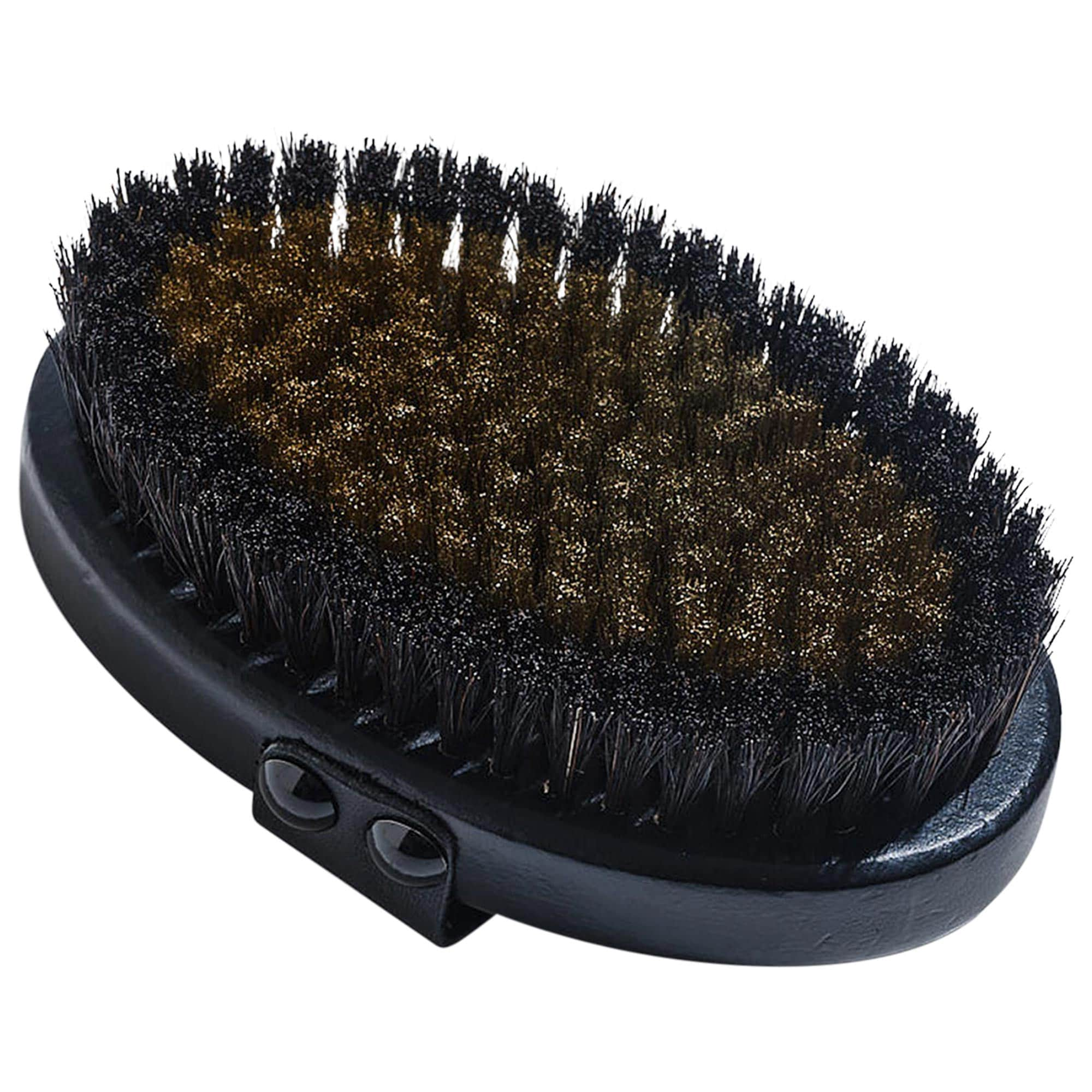
“I have tried many dry brushes, and my favorite is the Copper Dry Brush from Higher Dose,” says Strauhs. The brand says the ion-charged copper bristles create negative ions that energize and charge the skin. Strauhs adds that she simply prefers how it feels compared to others she has tried, which can sometimes be too harsh or uncomfortable.
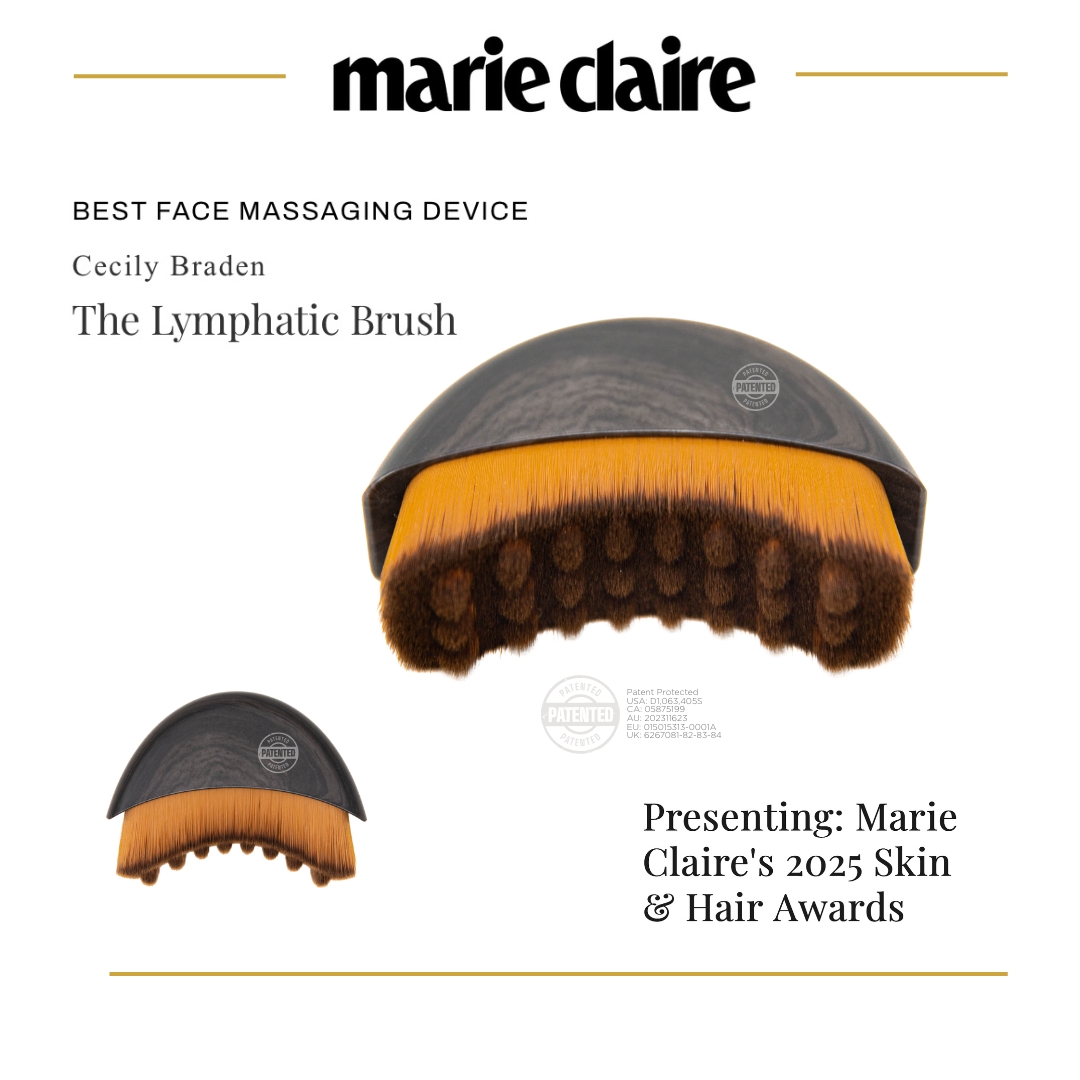
Braden’s own creation, this tool has a patented design that she says offers an easy, effective, ergonomic and economical way to incorporate lymphatic drainage into both professional and personal self-care routines. It does not require extensive knowledge or training. “The ergonomic contoured shape ensures proper contact with the surface of the skin and accurate alignment with the lymph nodes and lymphatic pathways,” she explains.

Gentle and easy to use for beginners, this is a great option that uses extra-fine, ion-charged copper bristles that naturally form negative ions through friction. It also makes a great gift for the woman who has everything, thanks to its chic packaging and overall elevated feel.
Why Trust Marie Claire
For more than 30 years, Marie Claire has been an internationally recognized destination for news, fashion and beauty trends, investigative packages, and more. When it comes to the products Marie Claire recommends, we take your faith in us seriously. Every product that we feature comes personally recommended by a Marie Claire writer or editor, or by an expert we’ve spoken to firsthand.
Meet the Experts

Dr. Brendan Camp is a double board-certified dermatologist at MDCS Dermatology in New York. He specializes in medical conditions like acne, rosacea, eczema, warts, psoriasis, moles, and skin cancer, as well as cosmetic treatments such as Botox, filler, laser treatments, and skin rejuvenation. Dr. Camp graduated with honors from Cornell University before completing medical school at SUNY Upstate Medical University in Syracuse, NY.
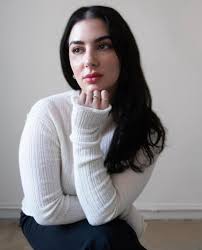
Cali Strauhs is an esthetician, facialist and the founder of Strauhs Studios, based in New York City.

Cecily Braden is a celebrated massage educator and esthetician based in New York, known for her expertise in Gua Sha Facial Fusion.

Iman Balagam is a New York-based freelance writer with several years of experience covering the beauty industry. Balagam's writing has been featured in editorial outlets like Cosmopolitan, Teen Vogue, Byrdie, and Harper's Bazaar.
